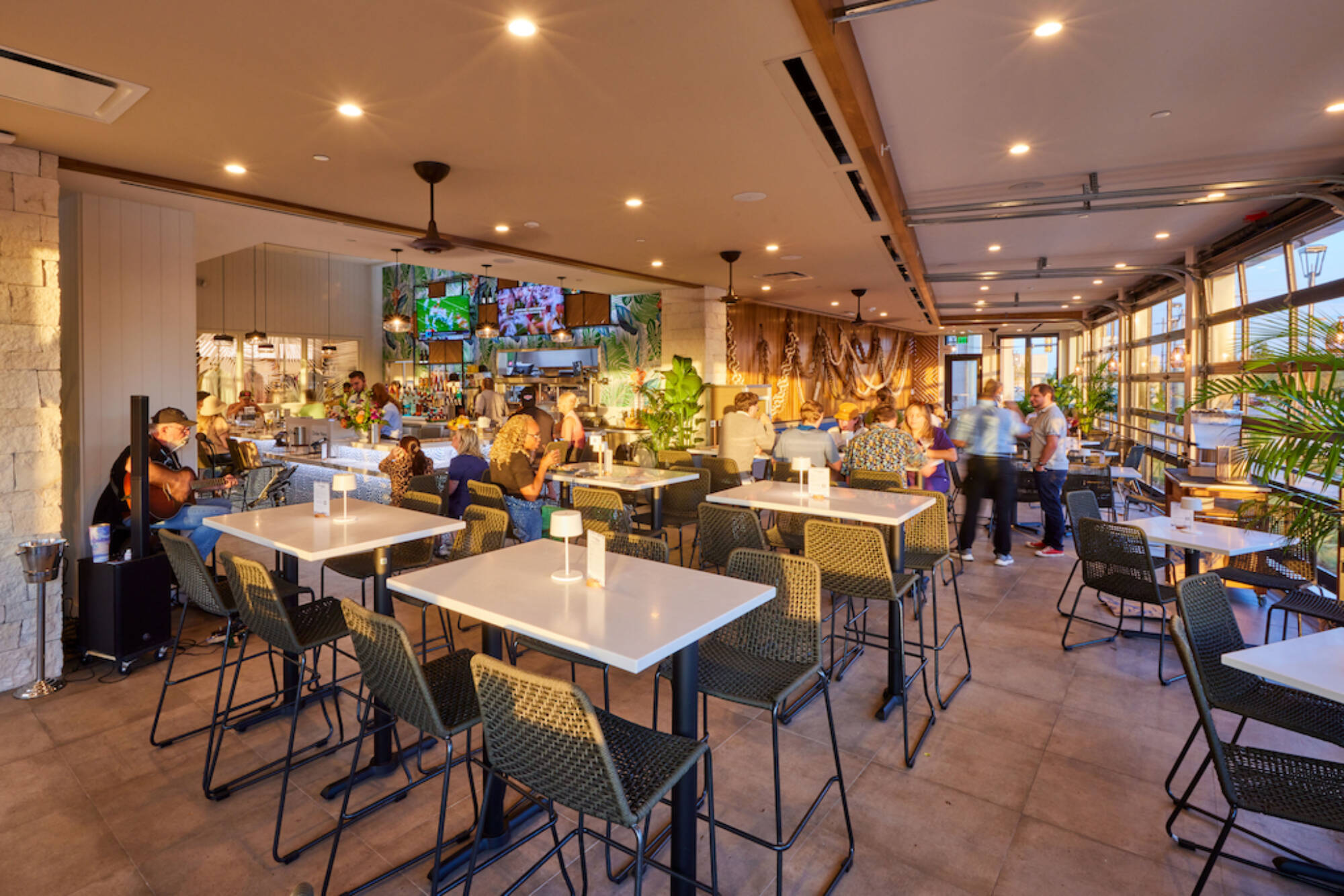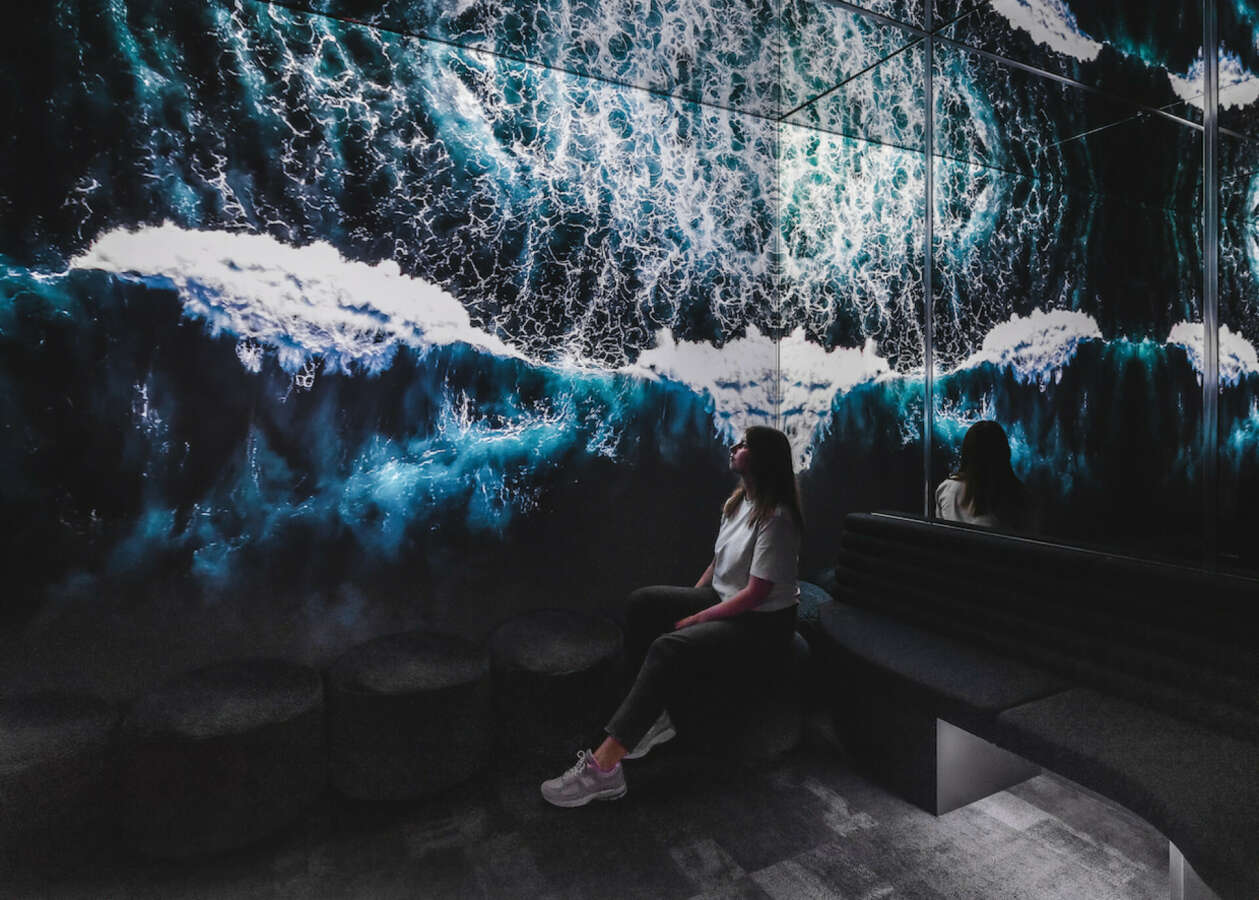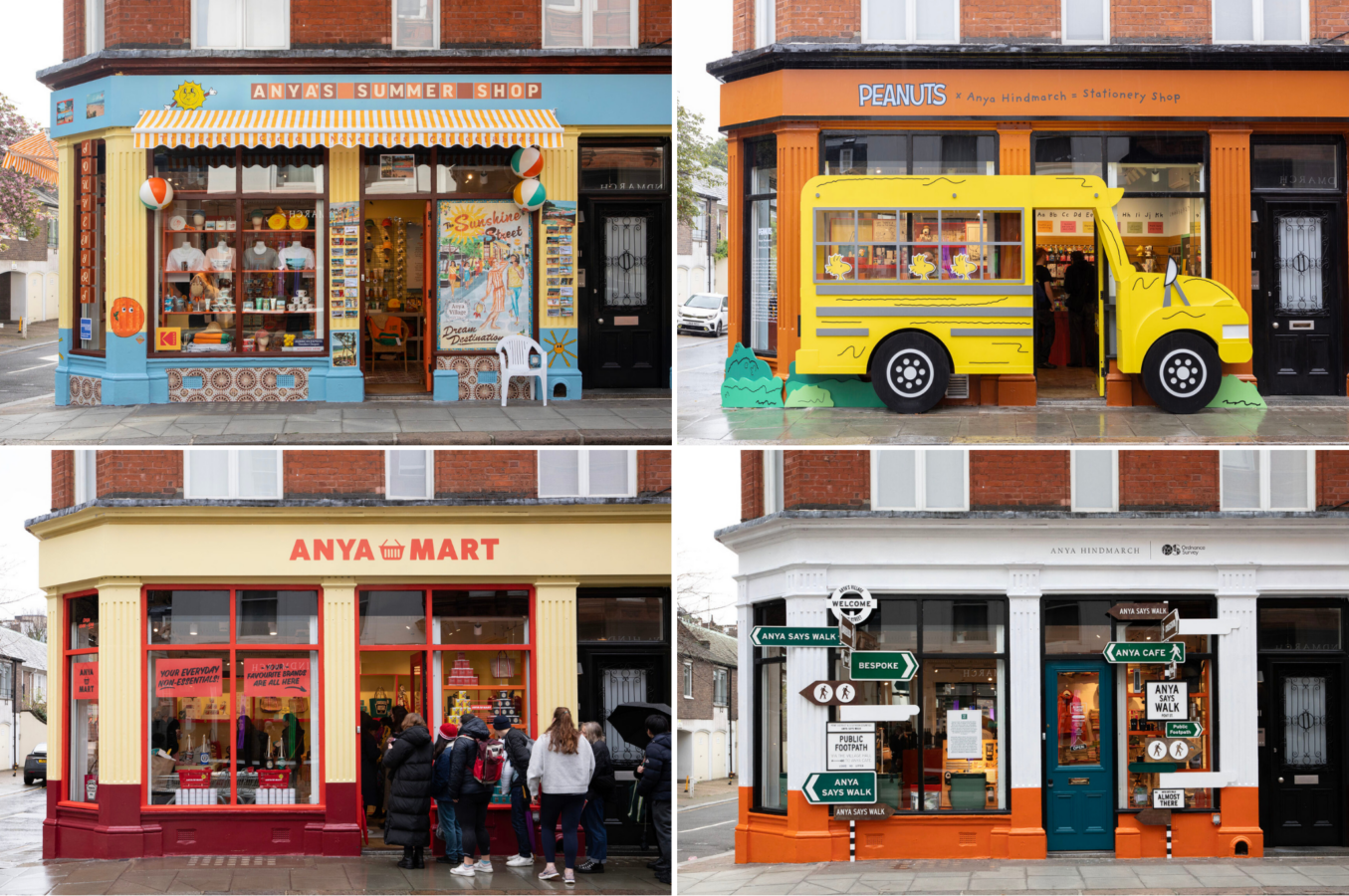Blurring Boundaries: The Rise of Experiential Retail Experiences
07/10/25

As consumers continue to navigate a world shaped by economic instability, political uncertainty, and post-pandemic fatigue, one thing is clear: the role of retail is shifting. It’s no longer just about products and transactions—it’s about offering places that respond to the emotional needs of people who are craving connection, calm, and a little joy. According to recent insights, 74% of people say they feel like they are just waiting for something good to happen. Retailers are stepping into that emotional void, offering experiences that go far beyond shopping.
At the heart of this transformation is a growing convergence between retail and hospitality. As the lines blur, successful brands are designing spaces that go beyond traditional commerce—offering immersive environments, social moments, and wellness-driven respites that prioritize experience over transaction.

Craving Calm: A Shift from Hustle to Healing
In response to years of hustle culture and burnout, consumers are now prioritizing slowness, stability, and authenticity. The result? A wave of retail experiences focused on rest and renewal.
Take EE Studio’s Digital Spa in London, where customers step into a tech-enabled sanctuary for guided meditation and sensory immersion. Similarly, Rituals’ Mind Oasis blends ancient wellness practices with cutting-edge technology to help visitors recharge through breathwork, rest, and reflection. These experiences borrow heavily from hospitality—designed environments that prioritize comfort, ambiance, and personalized care—while staying grounded in retail's accessibility and openness.
On the analog end of the spectrum, Self Space in London is rewriting the rules of storefront retail by offering walk-in mental health sessions. Its tactile materials, muted palette, and approachable furnishings reflect a warm, lived-in aesthetic more akin to a boutique hotel lobby than a clinic or shop—proving that the most effective wellness environments don’t need to be high-tech, just deeply human.

Craving Connection: From Transaction to Community
Hospitality and retail share a core ethos: creating environments where people want to linger. But today’s consumers—especially younger generations—are seeking more than ambience. They're hungry for connection. Since the pandemic, 85% of young people globally say they value in-person connection more than ever and wish their favorite brands offered a sense of community.
Retail spaces are answering this call by becoming hybrid gathering places. Brands are hosting classes, meetups, and events that combine lifestyle, learning, and leisure. Fortnum & Mason’s Food & Drink Studio, for instance, brings top chefs into the department store for live masterclasses, both in-person and streamed. It’s not just a retail activation—it’s a hospitality experience that blends food, culture, and connection.
Graphite Design Group has helped shape this evolution through our ongoing partnership with Tommy Bahama. With concepts like the Marlin Bar and the Miramonte Resort & Spa, Tommy Bahama is building lifestyle destinations that merge shopping, dining, and relaxation. Whether in a beach town or the Midwest, these hybrid spaces offer a taste of "Island Life"—where guests can shop, sip, and savor at their own pace, or extend their experience over days at a branded resort. It’s retail that feels more like a vacation.

Craving Delight: From Escapism to Emotional Resonance
As life becomes increasingly complex, consumers are gravitating toward spaces that surprise and soothe in equal measure. Some brands are leaning into full-on fantasy: Anya Hindmarch’s rotating London boutiques are theatrical love letters to nostalgia, where ice cream shops and cartoon collaborations invite visitors to play. Others, like Beverly’s Homewares in NYC, take a more grounded approach—evoking memory and comfort through tactile domesticity and personal storytelling.
These retail environments—whether immersive, irreverent, or deeply intimate—draw from the hospitality playbook: curate the vibe, engage the senses, and make people feel welcome. They are social-first, shopping-second.
What's Next?
As boundaries dissolve between categories, the future of retail is no longer about selling—it’s about hosting. Retailers are becoming facilitators of joy, rest, learning, and togetherness. They’re creating spaces that act more like hotels, wellness centers, or cultural hubs—places people visit not just to buy, but to belong.
At Graphite, we see this evolution as an exciting design challenge: how do we craft environments that serve multiple functions while still feeling cohesive, warm, and intentional? How can spatial design drive emotional outcomes—calm, curiosity, connection—and not just commercial ones?
The Joy Economy is here. It’s not about doing more. It’s about feeling more. And in this new era, brands that blur the boundaries between retail and hospitality will be the ones that truly resonate.
Related Insights
What is a 'Woonerf' anyway?
11/24/20
Facebook has expanded its Seattle presence again. According to The Seattle Times, this sub-section of the company, with headquarters based in Menlo Park, California, recently moved into a new office building at 1101 Dexter Avenue to house their employees in the epicenter that is South Lake Union.A Sense of Scale
11/24/20
This is the footprint of Alderwood Mall overlaid on Paris, France. We will walk 600 feet through a parking lot to get to the front door of a car-free, walkable shopping experience. In Paris, that 600 feet is an entire block of those very same stores in a walkable safe environment.Graphite Sustainability Initiative- Living Building Challenge and Beyond
01/02/24
Explorative study of sustainable practices and methods to combat climate change and promote carbon reduction in South Lake Union.